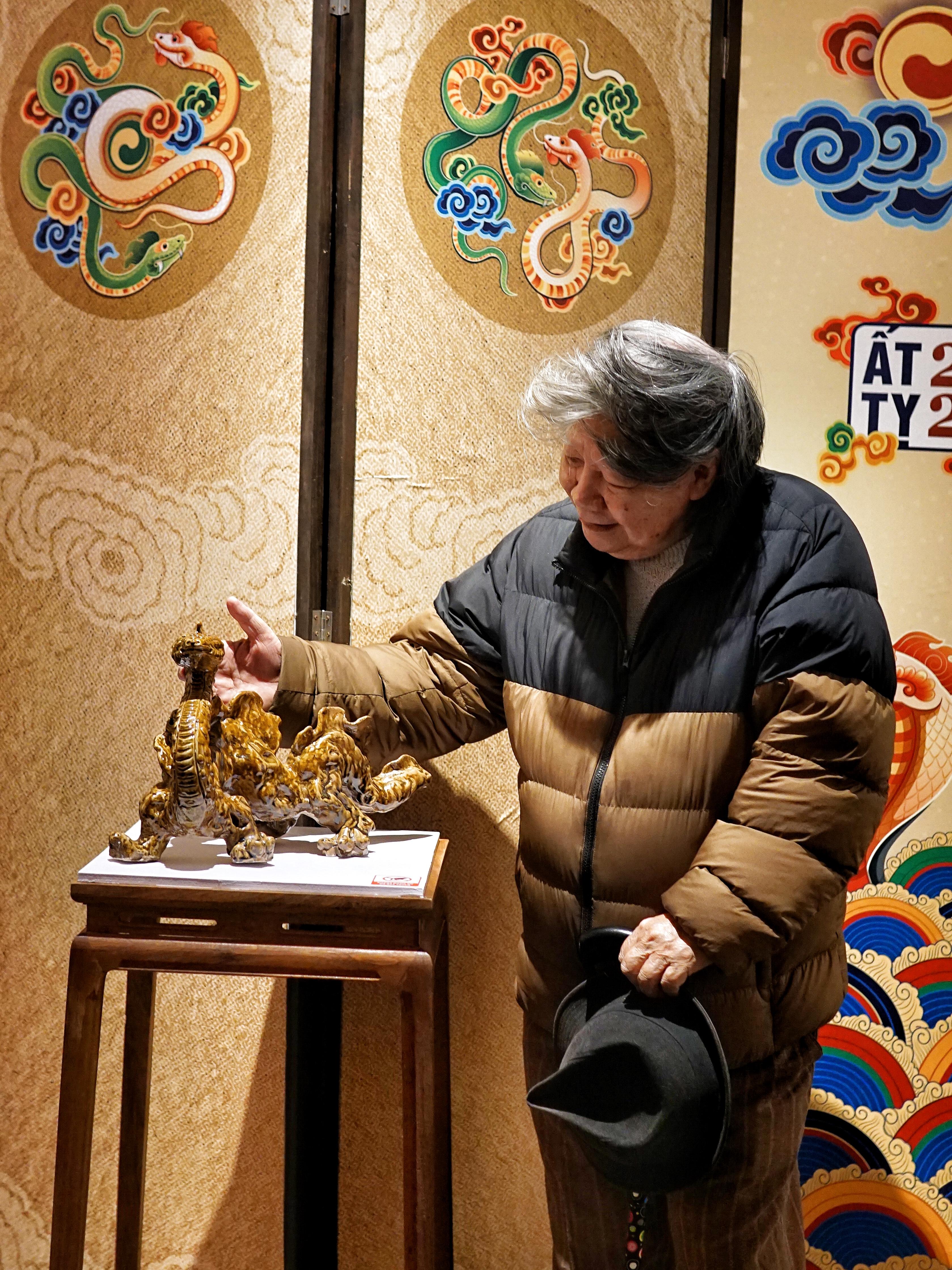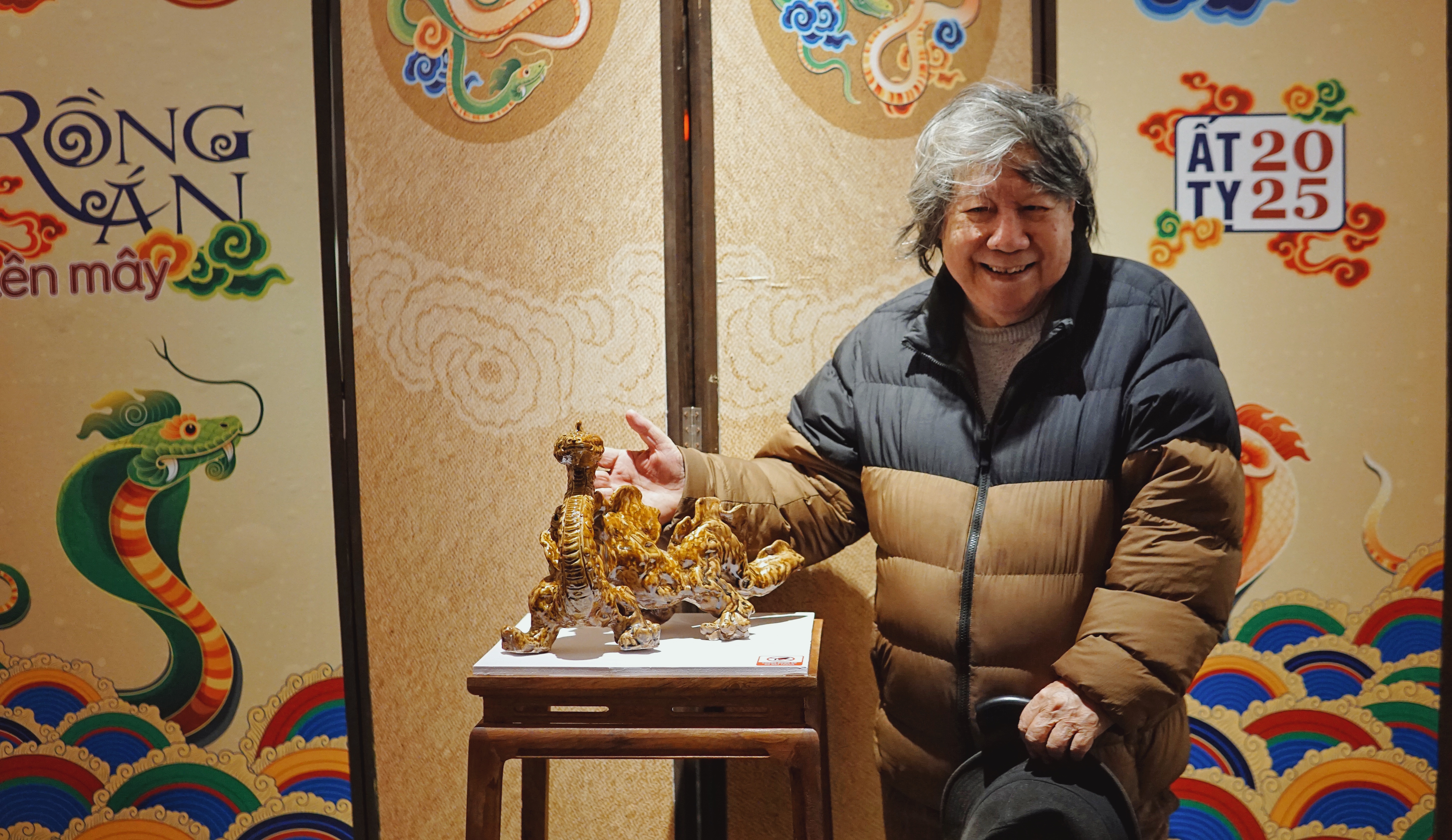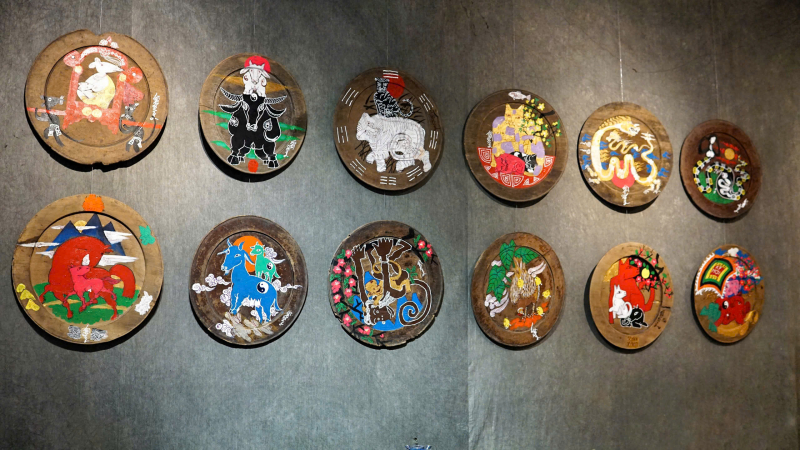The snake, also known as Ty, is not simply an animal that appears in nature. In Vietnamese culture, the image of Ty has been raised to a new level, becoming a profound cultural symbol, closely associated with the history and soul of the Vietnamese people.
On the occasion of the coming of the Lunar New Year, Travellive had the opportunity to talk with historian Le Van Lan at the exhibition "Dragon and Snake Rise to the Clouds" (Hanoi) - a special art event marking the 7-year journey of honoring the 12 zodiac animals of Vietnam in the project "My Zodiac" to better understand the culture and beliefs related to the image of the snake - the mascot of the year At Ty 2025. Each zodiac animal not only has spiritual meaning but also contains the story, emotions and hopes of Vietnamese people in the new year.
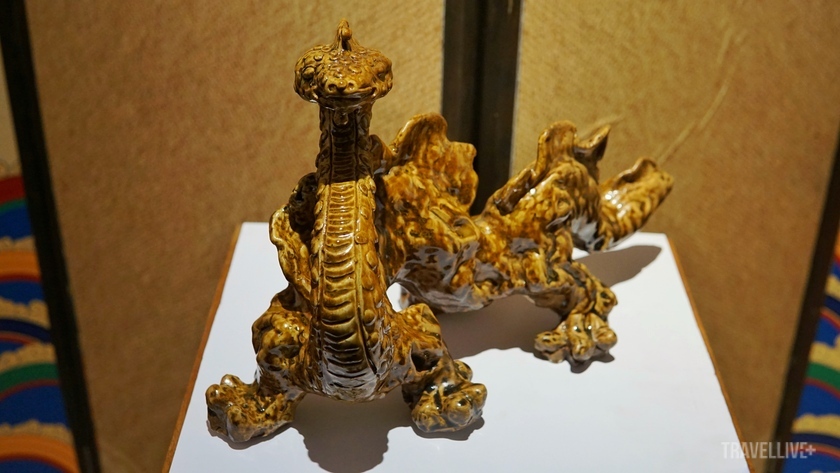
The snake, also known as Ty, is not simply an animal that appears in nature.
Role in the material and spiritual life of ancient Vietnamese people
Researchers believe that the image of the Vietnamese dragon originates from the snake. The dragon symbolizes the combination of yin and yang, while the snake is often associated with the yin element. This is interesting because Vietnamese people always seek a balance between the elements of yin and yang in life.

“The snake plays a very important role in our history, culture, civilization and nation” - historian Le Van Lan
Discussing the image of the snake in Vietnamese culture, historian Le Van Lan shared: “According to the Northern Chinese calendar and language, the snake is called Xa or Bach Xa. However, in Vietnamese culture, the snake is called Ty, similar to the way Vietnamese people call the mouse Ty. This shows that the image of Ty does not completely originate from Chinese language culture, but may have its own characteristics of Vietnamese culture.”
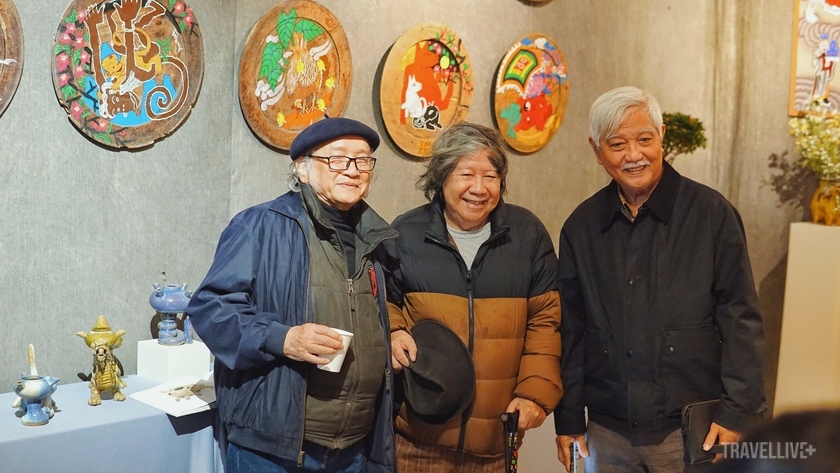
Historian Le Van Lan (center) at the exhibition "Dragon and Snake Rise to the Clouds"
In the context of Southeast Asian history and civilization, there are many interesting discoveries, especially the snake worship, which is popular not only in Vietnam but also in countries in the region. Snakes are not only honored but also play many important roles in history and culture. Another typical example is the Dong Son artifacts, which include daggers with handles carved with the image of two snakes entwined together, opening their mouths to hold the four legs of an elephant. This detail shows the sacred and powerful role of snakes in the material and spiritual life of ancient Vietnamese people.
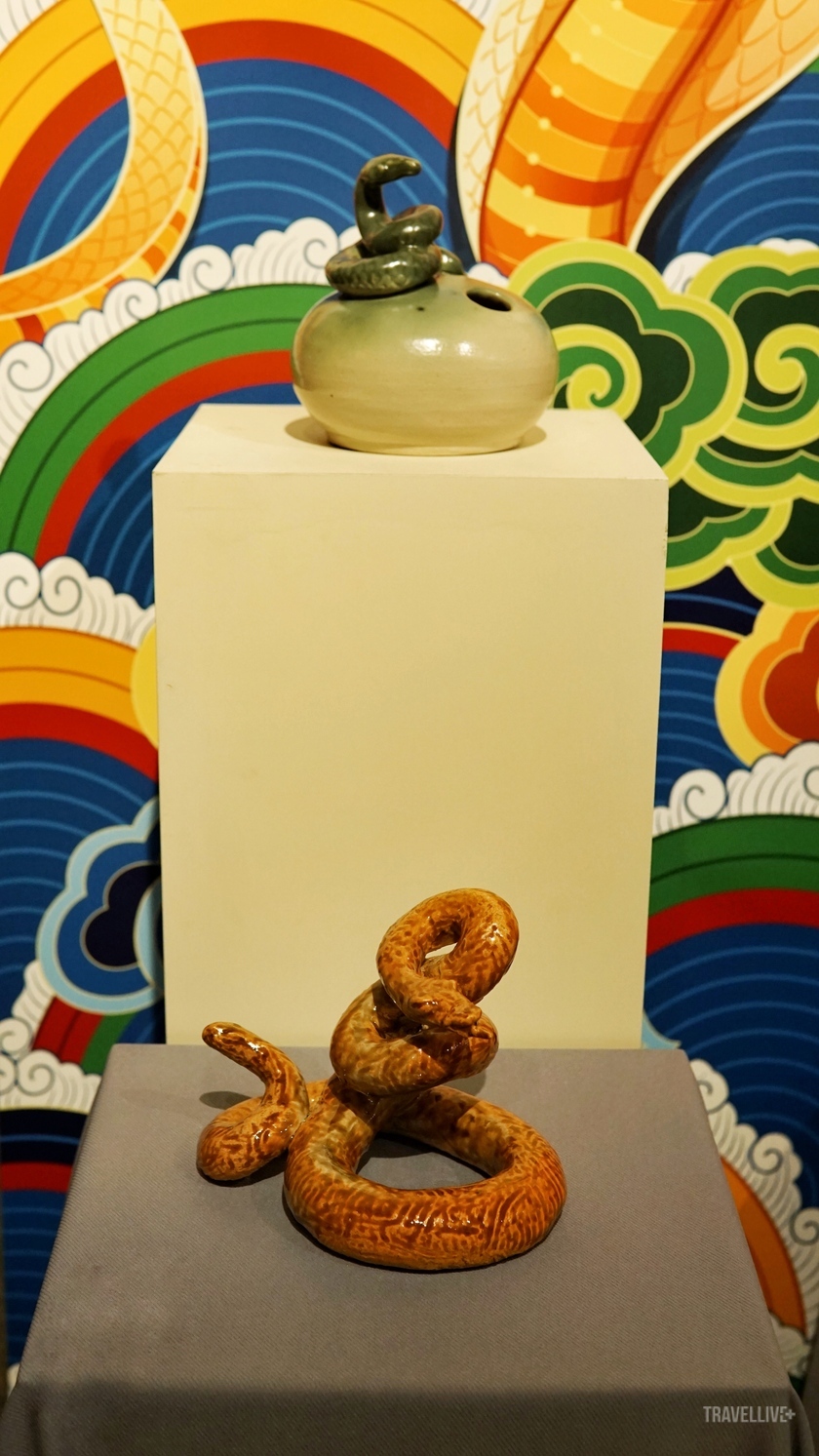
Artwork depicting a snake at the exhibition "Dragon and Snake in the Clouds"
“According to Confucian thinking, people are classified into two groups: gentlemen and villains. However, in Vietnam, I think this classification can be more humane than calling them into two groups: good and evil. When applied to the image of the snake, we can see the distinction between evil and good spirits, between evil and good spirits. From a biological perspective, snakes are often associated with danger and toxicity. However, spiritually, I have found that snakes are often revered as good spirits, a symbol of protection and shelter,” historian Le Van Lan affirmed.
Another typical example is the story of Xa junction, where three rivers meet in Bac Ninh. Here, there is a legend about the tiger and the giant, which is the image of a snake. The snake in this story was raised by a gentle mother, and later became the symbol of two heroes Truong Hong and Truong Hat - who helped King Ly Nam De fight the enemy and build the country of Van Xuan.


"Spiritually, I realized that the snake is often revered as a good god, a symbol of protection and shelter," historian Le Van Lan affirmed.
The image of the snake in Vietnamese culture is also expressed through many stories about gentleness, kindness and honesty. Historian Le Van Lan enthusiastically tells about the way the Vietnamese people call each other with two affectionate words "dong bao", which means the same egg sac, the same ancestor. In the language and culture of the Muong ethnic group, Au Co is called the U bird, because only birds lay eggs. And Lac Long Quan, Au Co's husband, is our ancestor. In folk language, there is a saying: "Dragon eggs hatch into dragons/Liu diu hatch into liu diu streams", thereby showing the close connection between dragons and snakes. Dragon and snake go up to the clouds is also a clear demonstration of the deep connection between the images of dragons and snakes in Vietnamese folk culture, reflecting the importance of this animal in the national heritage.
Hope for prosperity, ingenuity and adaptability
In the new year, the Year of the Snake brings Vietnamese people hope for prosperity, ingenuity and the ability to adapt to changes. People often pray that the Year of the Snake will bring advancement, strength to overcome challenges and obstacles, and welcome good opportunities.
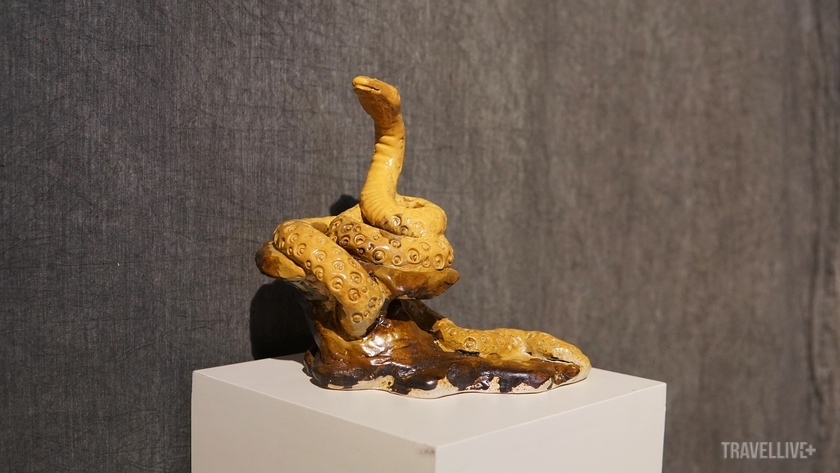
In the new year, the year of the Snake brings to Vietnamese people hope for prosperity, ingenuity and the ability to adapt to changes.
The snake or the Snake is not only a natural animal but also a cultural symbol, carrying historical and spiritual values. From the image of the snake in myths and legends, to the worship of Mother Goddesses, this animal has become an indispensable part of the spiritual life of the Vietnamese people.
Historian Le Van Lan also emphasized with the concluding sentence: “The snake is not only an animal in nature, but also a profound cultural symbol. The snake plays a very important role. In our history, culture, civilization and nation”.





